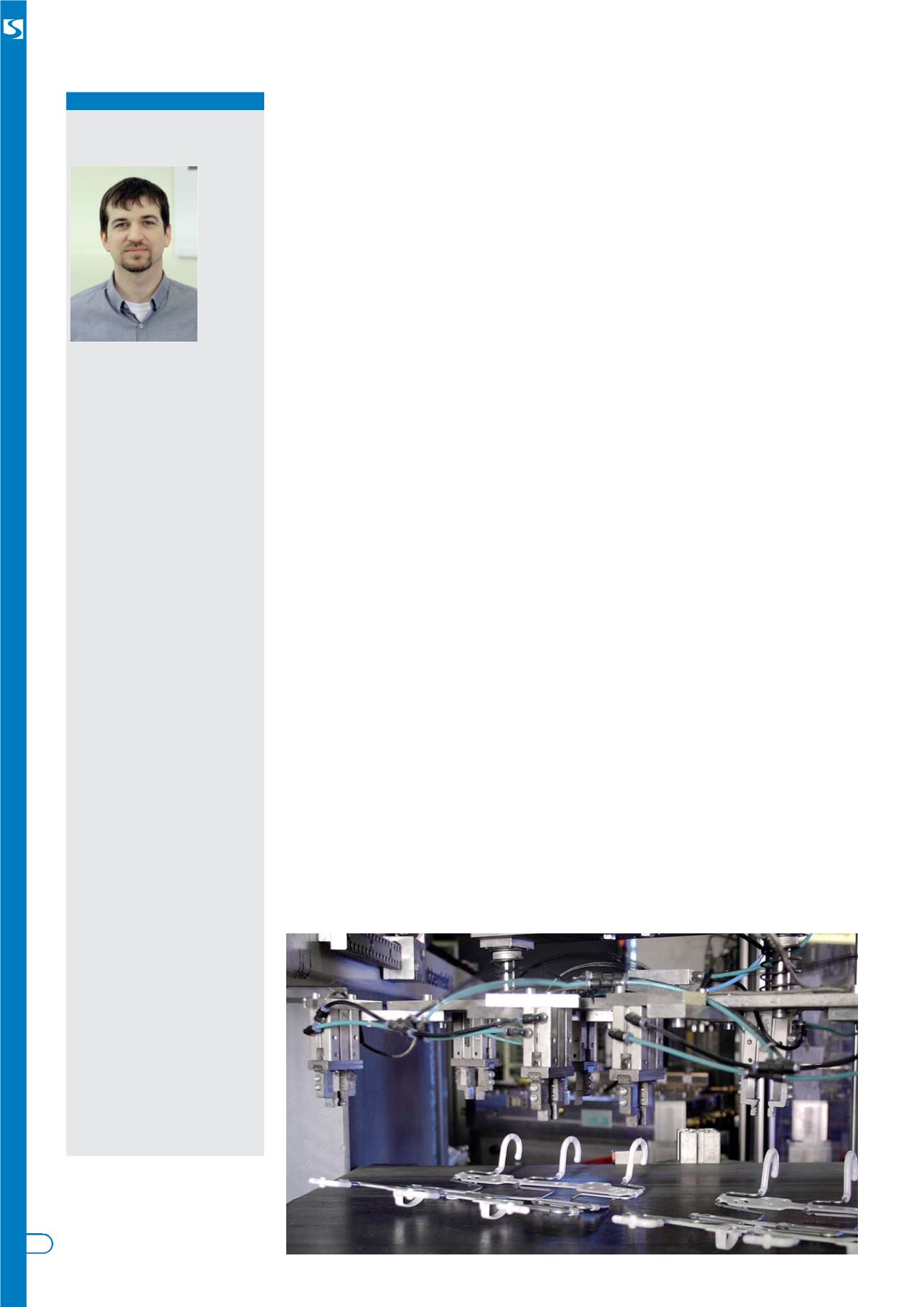
rogressive thinking, innovativeness
and the enormous potential for de-
velopment within the Group are the rea-
sons why SCHERDEL is traditionally an
excellent partner for customers from
every sector, particularly the automotive
industry. A fact once again demonstrat-
ed by the company through an in-house
development. Cooperation with the two
SCHERDEL subsidiaries INNOTEC
GmbH and SIMENT GmbH, renowned
for their technical developments, and
specialists in the production of seat
components at the manufacturing loca-
tion in Marienberg resulted in a new
sensor for visual and acoustic seat belt
warning signals for vehicle passengers.
European consumer organisations have
been demanding and monitoring seat
belt reminders in cars since 2003, and
these devices are a key criterion when
rating a vehicle’s active safety equip-
ment. Today, almost every passenger
seat is equipped with a seat belt re-
minder. The special innovative element
of the SCHERDEL in-house develop-
ment is that the sensor is not installed,
as is normally the case, on the A-sur-
face of the seat foam beneath the trim,
but on the B-surface. This offers
greater creative freedom in terms of the
seat design. The foam, trim, seat heat-
ing and climate control can be config-
ured to offer much higher levels of seat-
ing comfort. The roots of seat sensors
can be traced back over 40 years to the
USA. At that time only about 15 percent
of all car drivers wore the available seat
belts. Working with legislators, the auto-
motive industry therefore introduced the
SBR sensor (seat belt reminder) to min-
imise the risk of injury to car occupants.
The requirements placed on the effi-
ciency of these sensors have continued
to grow over the years. Today, it is no
longer enough that a sensor simply
recognises a seat is occupied by a pas-
senger. Modern systems in the North
American market are able to classify a
respective person based on their weight
and can tell if only an object, like a
notebook or handbag, has been placed
on the passenger seat. SCHERDEL
started developing the new seat sensor
in 2010 and has since carried out vari-
ous tests in line with performance spec-
ifications together with its customers.
These include, amongst other things,
simulated driving situations and testing
based on temperature and rotational
load change rates. A wide range of
seats are tested, and the new
SCHERDEL SBR sensor can be ap-
plied for basic seats as well as for sport
and climate seats.
The evaluation unit retrieves data on
seat occupancy and the seat belt lock
on the passenger side. It works with a
sensing device that closes when a con-
tact is activated. This results in a
change of resistance, which in turn is
6
SERVICE CENTRE – LOCATIONS –
TECHNOLOGY & PRODUCT DEVELOPMENT
– NEWS AND INFORMATION
P
New sensor enhances seat
NEW PRODUCTS
Large-scale production of SCHERDEL’s in-house
The production of vehicle seat mat
systems at the plant in Marienberg.
Staff profile
We’d like to introduce staff mem-
bers who will act as your contact
if required.
Dr.-Ing. Christian Konrad
Position: Materials Engineer /
SCHERDEL INNOTEC
Christian Konrad graduated
with honours from the Univer-
sity of Bayreuth in 2009.
Three years later, he obtained
his doctorate on “internal
oxidation in Ni-Zr-Y alloys”,
which was graded summa
cum laude, at the same insti-
tution. During his time at uni-
versity, Christian gained valu-
able experience at various
industrial firms throughout
Europe, and also carried out
research at the “University of
New South Wales” in Sydney
while completing his post-
graduate degree. In fact,
Christian still holds a teaching
position in metallic materials
at the UNSW.
Christian Konrad’s numerous
publications and applications
for patents pay testament to
his unique skill in his chosen
profession. Due to his exper-
tise in various scientific fields,
such as metallography, high-
temperature materials, elec-
tron microscopy and alloy de-
velopment, the German engi-
neer provides the Group as
well as partners and cus-
tomers with innovative re-
search and development
ideas.
In his free-time, the father-of-
two enjoys working with tim-
ber and metal, e.g. forging
Damascus steel.


